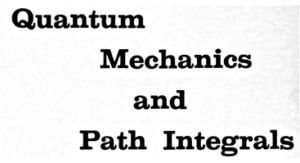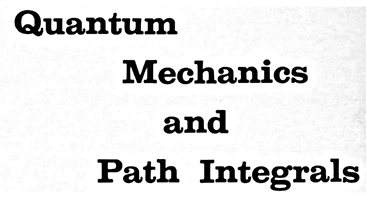
Problem 6-23
Show that the same result is obtained for
( 解答 ) § 4.3 の式 (4-72) と式 (4-73) における説明のように, 体積
従って,
また上述より, 式 (6-88) の「行列要素」
さらに, 単位体積当たり 1 個の粒子を見出す相対確率は
以上のことから, 式 (6-91) の「1秒当たり立体角
従って, 微分断面積
これには体積因子
【 注意 】 校訂版では, この問題文は次のような文章になっている:
Show that the same result is obtained for
これは校訂版では, 式 (6-87) 後よりこの問題 6-23 まで, 式や文章の表現が大分書き換えてあるからである.
しかし, ファインマンがこの問題を提起したのは「結果式である式 (6-93) に体積
更に, ファインマンは第4章の最後で次のように述べているので, 参考のために示しておく.
Some Remarks on Mathematical Rigor. The reader may have one or two reactions on seeing how the volumes
There is, of course, the more trivial point: Which is most familiar — which takes the least new knowledge? Most physicists have seen this argument about how to count the states in a box before.
Another point is that the mathematically rigorous solution may not be physically rigorous. That is, the box may in fact exist. It may not be a rectangular box, but it is not often that experiments are done under the stars. Rather they are done in a room. Although it is physically reasonable that the walls have no effect, it is true that the original problem is set up as an idealization. It is no more satisfactory idealization to move the walls to infinity than to replace them by perfect mirrors far away. The mathematical rigor is wasted in the first idealization, since the walls are not at infinity.
The wall approach is just as rigorous, or rather just as nonrigoryous. It has several advantages, For example, in finding that the volume cancels out we do learn that at least one aspect of the idealized walls, namely how far away they are, is unimportant. This discovery makes us more intuitively convinced that the actual dispositon of the real environment may be unimportant. Finally, the formula derived is very useful when in fact we do have a finite sample. For example, in Chap. 8 we shall use it to count sound-wave modes in a large, rectangular block of material.
On the other hand, the advantage of the mathematically clean argument is the avoidance of much unnecessary detail that cancels out. Although, using the wall approach, one may learn something about how the walls have no effect, one may be firmly convinced that this is true anyway and not wish to depend into details to see it again.
The normalization problem is a special example, but it illustrates the point. The physicist can not understand the mathematician’s care in solving an idealized physical problem. The physicist knows the real problem is much more complicated. It has already been simplified by intuition, which discards the unimportant and often approximates the remainder.


